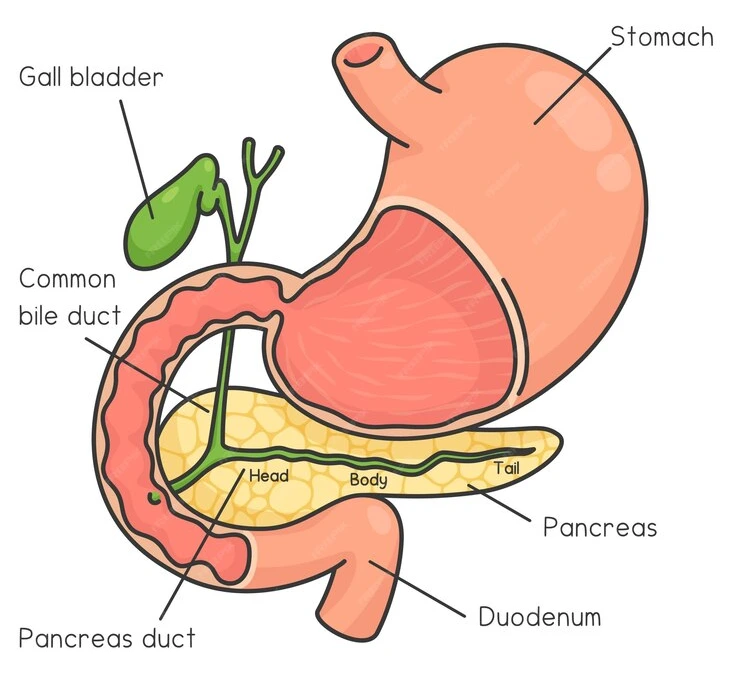Symptoms of Gallbladder Stones ?

Introduction
Gallbladder stones, also known as gallstones, are solid particles that form within the gallbladder, a small organ situated just below the liver.These stones can vary in size, ranging from as small as a grain of sand to as large as a golf ball.Understanding how these stones form and recognizing their symptoms is crucial for early detection and effective management.
Formation of Gallbladder Stones
Gallstones typically form when there is an imbalance in the substances that make up bile, a digestive fluid produced by the liver and stored in the gallbladder.Bile primarily consists of cholesterol, bile salts, and bilirubin. When the balance of these components is disrupted, it can lead to the formation of gallstones through various mechanisms:When the balance of these components is disrupted, it can lead to the formation of gallstones through various mechanisms
Excess Cholesterol
One of the most common types of gallstones is cholesterol stones.These form when there’s an excessive amount of cholesterol in the bile, causing it to crystallize and form stones.Factors such as obesity, a high-fat diet, and rapid weight loss can contribute to the accumulation of cholesterol in the bile.
Biliary Sludge
This is a mixture of particulate matter in bile that can accumulate and form a thick sludge.Over time, this sludge can harden into gallstones.Conditions such as pregnancy, rapid weight loss, and certain medications can increase the risk of developing biliary sludge.
Bilirubin Imbalance
Bilirubin is a waste product produced when the liver breaks down old red blood cells.In some cases, an excess of bilirubin can lead to the formation of pigment stones.These stones are typically smaller and darker in color compared to cholesterol stones.
Symptoms of Gallbladder Stones
Common symptoms of gallbladder stones include:
- Abdominal Pain: This is the hallmark symptom of gallstones.The pain is often described as a sudden and intense sensation in the upper right abdomen, which may radiate to the back or shoulder blade.It can occur after meals, especially those high in fat.
- Nausea and Vomiting: Many individuals with gallstones experience nausea and vomiting, particularly in conjunction with abdominal pain.
- Jaundice: If a gallstone becomes lodged in the bile duct, it can obstruct the flow of bile, leading to jaundice.This condition is characterized by yellowing of the skin and eyes, dark urine, and pale stools.
- Fever and Chills: In cases where gallstones cause inflammation or infection of the gallbladder (cholecystitis), fever and chills may occur.
- Indigestion and Bloating: Some people with gallstones may experience symptoms of indigestion, such as bloating, gas, and discomfort after eating.
Conclusion
Gallbladder stones are a common medical condition that can cause significant discomfort and complications if left untreated.While the exact cause of gallstone formation may vary, maintaining a healthy lifestyle, including a balanced diet and regular exercise, can help reduce the risk.If you experience symptoms suggestive of gallstones, such as severe abdominal pain or jaundice, it’s essential to seek medical attention promptly for proper diagnosis and management.Early detection and intervention can prevent complications and improve outcomes for individuals with gallbladder stones.
